The famous American television and radio host Larry King, used to say to his audience a very witty story about his father. He says that his father, a Ukrainian jew, came to the US thinking that America is the greatest land of all, where even the streets are paved with gold. However, shortly after arriving, his father realized three things:
- The streets weren’t paved with gold.
- The streets weren’t paved at all.
- He was the one to pave the streets.
There is no secret for anyone that content marketing is a must. And the truth is that copywriting isn’t just about writing blog posts anymore; it’s about telling good stories well. How do you get to create those stories that will increase your conversion rates hundreds of times?

We do not claim to have discovered the magic formula that will boost your business guaranteed. However, we’ve put together a comprehensive list of essential copywriting tips that will surely revamp your content, and it will blow up your conversion rate.
- Write in Short Paragraphs
- Set Yourself a Word Count to Make Your Copy as Laser-Focused as Possible
- Don’t Use Terms that Might not be Widely Understood
- Forget Academic Writing
- Make Sure Your Copy is Well Structured, Clear and Logical
- Be Detailed when It’s the Case; Don’t Assume Your Readers Know Everything
- Know the Goal of Each Piece of Your Content
- Content Does not Necessarily Mean Just Words
- Use Plenty of Paragraph Breaks and Quotes to Make Your Copy More “Readable”
- Show Empathy with the Reader
- Don’t Forget about the Power of Storytelling
- Use Punctuation Carefully to Make Your Copy Impactful
- Use Sub-headings to Highlight Your Key Points
- Make Sure Your Copy Is Free of Spelling Mistakes
- As Much as Possible Be Authentic, Honest and Trustworthy
- Always Keep the Design in Mind when Creating the Text
- Create a Style Guide for All Your Copy
- Do Your Psychology Homework
- Your Copy Should Be Much More about Solving Problems than about Self-Expression
- Define Your Readers and Create Content for Them
- Always Do Your Homework. Research your topics
- Write List Posts
- Include the Important Numbers in the Headline
- Use Short, Well Structured Paragraphs
- Write Your Copy in a Conversational Way
- Take Advantage of Power Words
- Make Efforts to Become a Better Writer
- Make Efficient Use of Social Media
- Remember that All of Your Content Matters
- Use Synonyms and Help Google to Help You
- Stalk Forums for the Exact Words Your Readers Use
- Write Your Own Description Tag
- Focus on Long Tail Keywords
- Write Up to the High, Positive Expectation
- Be Crystal Clear and Give Quick Previews that Make Your Points of View Acceptable
- Deliver Something Valuable in an Intuitive Way
- Go with the Status Quo Over Newly Presented Facts
- Learn how to Measure the Success of Content Marketing
- Learn where Your Readers Get Their News and Information from
- Get Inspired by Your Community’s Interest
- Thoroughly Document on Your Niche to Find Content Inspiration
- Talk to the Sales and Support Team
- Create a Content Strategy Calendar
- Remember that Visual Information Makes Readers More Thorough
- Harmonize Your Online Content with the Offline One
- Always Keep the Attention Span Matter in Mind
- Learn from Your Most and Least Shared Content
- No Shares, No Likes, No Comments = No Traffic
- Originality Is a Must
- Existing Content Needs Love, Too
- Timing Is Everything
- Spot your competitor’s most engaging content
- Make Use of Content Curation to Boost Your Influence
- Analyze, Analyze, Analyze
- Creativity Is Key!
- Fill Information Gaps – Become a Reference
- Targeting Longtail Keywords to Engage Your Audience
- Repurpose Your Content
- Make Use of Content Convergence
- Make It Interesting and Diverse, not Just Relevant
- Don’t Forget about the Content Monarchy
- Quality Is not a One Time Act, It Is a HABIT
- The Title of Your Content Will Influence Your Rankings
- Ask Rhetorical Questions to Engage Readers
- Choose the Fonts and Colors Carefully
- Use Positive Frames to Describe Information
1. Write in Short Paragraphs
There a few things more off-putting to a reader than a whole block of text with no spaces. You’ll do nothing but chase away your readers with such type of content. Writing in short paragraphs is an effective way to write on the web as it provides ‘eye relief’ throughout the page. Short paragraphs are easily digestible and can be skimmed over at a glance.

2. Set Yourself a Word Count to Make Your Copy as Focused as Possible
Long content or short content? Which one is better? What is the case? The more, the merrier, or less is more? Well, if you are looking for a short answer to this question you need to know that there isn’t one, as it depends on rankings, conversions, followers, popularity, authority, engagement, keyword optimization, etc. Yet, it seems that shorter articles are better correlated with higher ranks. We’ve detailed this matter in a previous case study we invite you to take a look at.
The bottom line is that you have to be very savvy about the number of words you use in your website copy, depending on what you want to achieve. Write according to your readers’ needs and remember that nowadays digital readers have a limited span attention.

3. Don’t Use Terms that Might not be Widely Understood
Big words don’t make you seem smarter.
Being able to explain complicated things in simple terms, however, truly is the sign of intelligence.
There are obviously times when you need to use technical terms or introduce complex concepts. But try not to get too comfortable using jargon and keep forcing yourself to remain accessible to as large an audience as possible. When not sure if you’ve met this, ask yourself: Would a newcomer to the field have an easy time following your text? Would an outsider grasp the importance of what you published?

4. Forget Academic Writing
When we talk about academic writing we don’t necessarily mean scientific articles. But there’s a certain rigor to that writing which might not appeal to the general audience. This is not to say you should dumb things down. Essay Tigers expert recommends using everyday language to engage with as wide an audience as possible. There’s a simple, two-step approach for making this happen:
Read what you’ve written out loud. If some parts don’t sound like something you’d say to a friend in real life, then change it.
Read what you’ve written out loud to someone else and ask them to tell you what the copy is about. If they can’t tell you easily, then change it.
5. Make Sure Your Copy is Well Structured, Clear and Logical
We’ve touched on this before but it’s worth repeating: clarity is key. You’ve probably got the best lesson in writing in primary school: everything needs to have an intro, a body and a conclusion. And all of these need to be clearly laid out. Here’s a quick rundown of what you need to touch on:
What is the point of your copy? You’re writing a new text because you have some claim to make, some wisdom you want to share.
If you were to write it in a single sentence, what would that sentence be?
How do you know what you claim is true? You need to present evidence (case studies, statistics, expert opinions) and explain why your evidence is relevant… Just because it happened in some instances, it doesn’t automatically mean it’s going to be true for everyone.
Why does any of it matter? In public speaking, there’s the concept of “WIIFM” – “What’s In It For Me?”
The reader needs to know what they’re gaining by reading your article.
What’s the best thing they can do with the newfound wisdom?

6. Be Detailed when It’s the Case; Don’t Assume Your Readers Know Everything
This is a delicate balance because explaining too much could make knowledgeable readers bored, while not explaining enough could make inexperienced readers feel left in the dark. But it’s always better to err on the side of caution and explain the background of something. Why is phone encryption suddenly a problem? What is the deal with fake news? Even if a lot of your readers might know a great deal about your topic, you can still provide details while also putting a new spin on it.
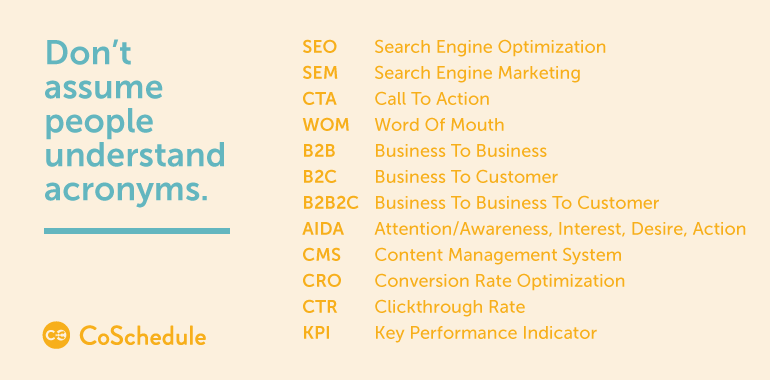
Source: http://coschedule.com
7. Know the Goal of Each Piece of Your Content
You don’t just write to a mass content. Each piece you publish should have a goal in terms of the effect on the reader.
The best scenario is when the reader will actually take an action as a result of reading your piece.
For instance, if you publish a DIY instructable, you might get people who read or watched it try to do the same. That is, of course, quite ambitious and not all pieces need to elicit action from the readers for them to be successful. Yet, looking at the screenshot below, you can easily follow the steps presented, right?
You could also write an article where you explain a new concept or study something people knew certain things about (but didn’t know what to think of it). That means your main goal was to expand your readers’ knowledge. Or you could simply publish a piece on a subject that’s quite well-known and invite people to comment about it, thus facilitating an exchange of good practices between people who otherwise might not have interacted with each other. There’s more than one way to make a difference and you just need to set up realistic goals.

Source: ideas.evite.com
8. Content Does not Necessarily Mean Just Words
Don’t have enough time to write a long piece? Having a bit of a writer’s block?
There’s a lot of ways to publish content other than text: mix it up with images, create a video out of it, make a podcast, etc.
Sometimes the choice about how to reach your followers is pragmatic (it takes less time to record a podcast than to write the same content); other times it’s about strategy – maybe your followers are more easily swayed by videos or maybe it’s easier for them to follow content as podcast (while driving) than writing. When in doubt, just mix it up – it’s always best to cover more ground. And always build compelling copy for each method.
9. Use Plenty of Paragraph Breaks and Quotes to Make Your Copy More “Readable”
Writing good copy should be a bit like writing good journalism.
“One paragraph, one idea,” is a very useful motto when it comes to structuring your text.
Set out a claim, explain why it could be true, illustrate it with an example and then see what the implication of that claim might be. Then discuss that implication in the following paragraph. When you have a longer text, bring out some quotes or poignant phrases that might draw the readers’ attention, so that they can better focus and find the section they need more easily.
10. Show Empathy with the Reader
Answering the reader’s WIIFM (What’s in it for me) question is a great start, but if possible, you should try to go beyond that.
Try to understand your readers’ frame of mind: what are their expectations, what might they be worried about?
Sometimes it could be as simple as tapping into their shared history
Look, we’ve all been there: trying to meet the deadline even though…
Other times, you need to tap into something that drives your readers and what their expectations (positive or negative) could be (“You’re probably thinking that this is too hard for you to do – that’s a normal reaction, but…”). All in all, it’s about putting a face to your audience and making the writing more of a dialogue than a monologue.

Source: brettrelander.com
11. Don’t Forget about the Power of Storytelling
Sometimes we can get too technical about things and assume our readers are information-parsing-robots. They’re not. They’re human beings and have a natural tendency to like stories and be attracted to the coherence and consistency of a well-told story. You can keep all the facts and all the logical analysis you wanted to pour into your copy, but if you really want to strike a chord, make sure to wrap it in some nice storytelling tropes:
Is there a hero to your story, trying to overcome difficulties?
Is there an antagonist trying to stop the hero from succeeding?
Does goodness get rewarded in the end, despite hurdles along the way? Etc.
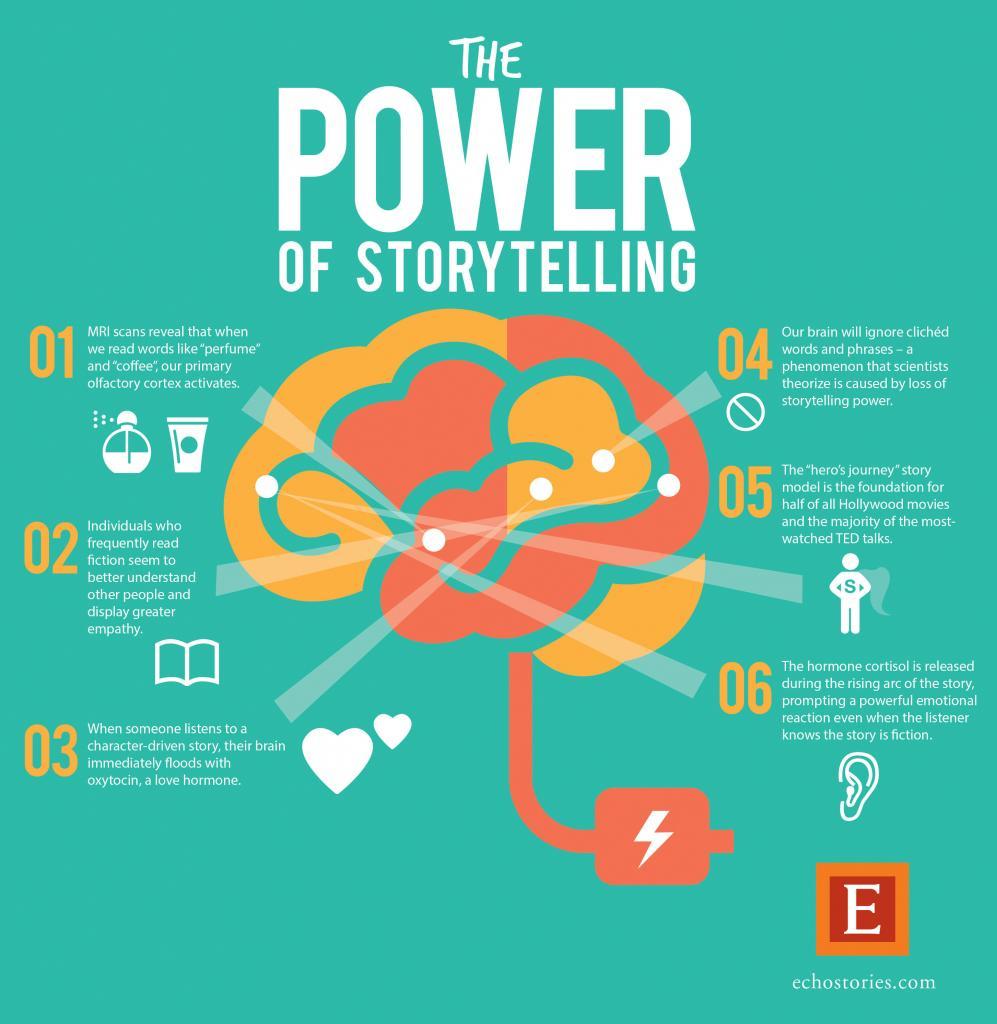
Source: echostories.com
12. Use Punctuation Carefully to Make Your Copy Impactful
Read this aloud: “He only told her he loved her.” Which word did you emphasize? There wasn’t a correct way of saying it, but how you chose to say it made a big difference. It might also have been influenced by your traits, beliefs, experience and social background. This is not just about using correct grammar (which, as the Internet warns us, can save someone’s life).
It’s also about using punctuation with purpose.
You want to convey a sense of urgency? Use short sentences and replace semicolons with full stops. You want to make a short detour in the middle of your sentence? Pick your weapon wisely: commas, dashes, parentheses…
You want people to pay attention?
The exclamation mark may have worked before, but it’s now been so overused on clickbait sites, that people just tend to ignore it and what it’s meant to signify.
These may seem like details at first, but once you understand how punctuation impacts not only the reading, but also the understanding of a text, you might decide to pay these details a lot more attention.
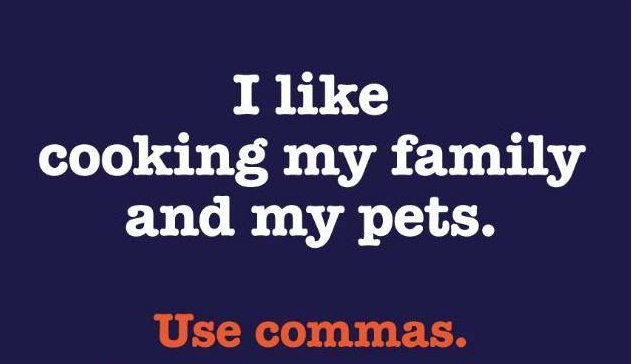
13. Use Sub-headings to Highlight Your Key Points
We tend to like having a sense of completion. Especially with a work that’s quite sizeable, it’s nice to have smaller milestones. It’s encouraging to know that while the end is not necessarily near, we’re definitely heading in its direction.
Sub-headings help your readers stay motivated.
But they also serve a very practical purpose: they make particular content easy to find both for first-time readers and for recurrent ones.
14. Make Sure Your Copy Is Free of Spelling Mistakes
This should go without saying, but it’s important to understand why this is important. It’s not just that it can make readers annoyed because they have to do a double take on a sentence. It’s also not that even small typos can lead to inaccurate statements, in particular when they’re easy to miss (writing “you’re now allowed to…” instead of “you’re not allowed to…” changes the whole meaning, but is grammatically correct in both cases).
Spelling mistakes underscore lack of professionalism and lack of concern for the reader.
The message is pretty straightforward: “We didn’t care enough about the people reading this so as to spend just a little more time on making this copy look like a polished product. We think this is good enough.” And that’s not what you want them to think.

Source: liquidbubble.co.uk
15. As Much as Possible Be Authentic, Honest and Trustworthy
There’s a lot of carefulness and consideration put into most writing. But when they’re not doubled by authenticity, when the text doesn’t seem to be coming from a real person, or to be addressed to one, that attention comes across as disingenuous and unnatural. So try to stay honest with your audience and use your unique selling point.
Be open about your intentions and about your experience and abilities.
Admit when you’re not up to speed on something. Don’t jump on bandwagons. Talk about what matters to you. It’s really hard to define what “authentic” is, because we should always try to get outside of our comfort zones. But I think authenticity comes from being able to admit, having tried something new or that everyone is raving about, that you didn’t like it that much and you want to do something else next time. That honesty is what keeps followers interested and engaged.
16. Always Keep the Design in Mind when Creating the Text
This goes beyond fonts and colors. It’s about page layout and how everything looks (and feels). In a way, it’s a bit like fashion – some types of content just go better with certain types of layouts. If your pieces are lengthy and complex, with pictures and charts and graphs, make sure you have a page layout that makes that kind of content attractive and easy to go through.
A more traditional style might help the reader keep focused on the text.
If you work in short bursts of content, be it text, photo, or video, create a layout where every other element points toward your content marketing strategy (rather than distracting from it). Once you’ve settled on a style, try to keep it in mind whenever you’re writing new content: where is this paragraph going to be on the page? Should you insert this picture to the left or to the right (or in a medallion)? How easy is it going to be to flip to the next page? Etc.
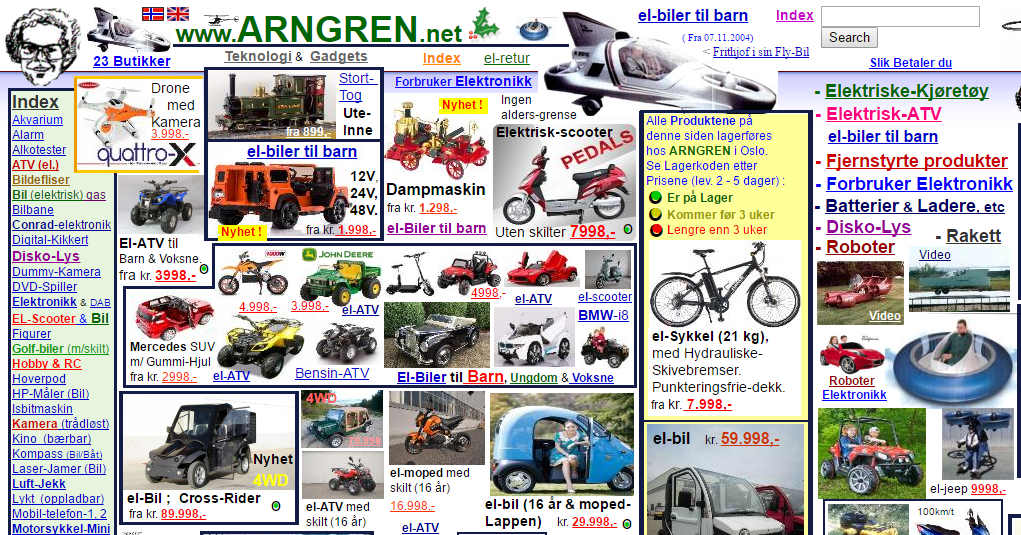
17. Create a Style Guide for All Your Copy
Try to define your style. There’s obviously going to be a lot of adjustment as you grow and find out more about design, but you should document these changes as much as possible. Coherence and consistency in style are rewarded by readers, even though most of the time their influence is subconscious. So keep up and create a manual to document your decisions:
What font, size and color should article titles be? What about body text?
How big should the pictures, videos and other objects be? How much space should they take relative to other elements?
What colors do you use, aside from the colors already visible on your site? What colors and styles to highlight words, show hyperlinks or frame text boxes? Etc.
Of course, these things can be defined in various ways, so that you’re still left with enough flexibility.
18. Do Your Psychology Homework
We’ve referenced psychology quite a few times in this list already, when talking about what we want, expect or like. There’s a whole field out there about economic behavior and it’s still expanding. Turns out we’re not actually those rational individuals we believe ourselves to be (no, not even you, sorry to say). Most of us are actually pretty irrational when seen from an outside perspective, even though we abide by our own internal logic.
We don’t always make the best buys, the best choices or act in our best interests.
Why are so many of our behaviors counter-intuitive? There’s no easy answer (no single answer either, for that matter), but it will definitely help you to find out more about what the explanations might be. Writers like Ariely, Duhigg, Goleman, Kahneman or Taleb all featured extensively on the bookshelves in the past few years and with good reason.

Source: http://irrationalgames.com/
19. Your Copy Should Be Much More about Solving Problems than about Self-Expression
A lot of content comes from wanting to share experience. You know something most other people – even those in your field – might not know. You are excited about that and want to make them aware of your new gained wisdom. The important thing to remember is that the focus should stay on sharing and not on you as the source of wisdom. That’s not to say your opinions have no place in your writing, on the contrary. But always ask yourself these 3 questions:
Will this info help my readers to better understand the subject?
Will this info help my readers to better apply this knowledge for doing something practical?
Will this info help me to look cool but not add anything valuable to this piece?
If the answer to the first two questions is a resounding “Yes”, then you should definitely include that piece of information in your copy. If the answer to these questions is “No” and the only “Yes” comes from the third question, well… you’ve got yourself a pretty good conversation opener for the next party.
20. Define Your Readers and Create Content for Them
As you gain more readers, start thinking about them as potential clients. Who are they? How can you split them into smaller groups based on age, gender, line of business, interests, income, etc.? You might not have all this information all the time, but you should at least try to find out as much as you can about them. Because if you are to have an ongoing dialogue with them, you need to try and understand what they’re like. Are they typical representatives of a certain generation (X, Y, millennials)? Do they even fit the definitions or are they a group with much more specific characteristics? It would help if you could listen to them – have a way to collect their feedback and allow them to voice out their opinions.
The better you get to know your readers, the more likely it is you will be able to write directly to them and keep them interested in your company.
21. Always Do Your Homework. Research your topics
With so much information at our fingertips, it’s easy to think we know a lot. In reality, we know very few things well. We know a bit more superficially. Most of the topics, we just have a very inaccurate understanding of. But what happens when we try to talk about something we know little or nothing about as if we knew and stumble upon someone with actual knowledge on the topic? The result, as you’ve guessed, is disastrous. Do your homework before publishing any new content. Do more than just a cursory overview of the information that’s been published lately. Go in depth:
Read books, not just articles;
Watch documentaries and videos of experts in that topic;
Try to get in touch with people who’ve actually experienced that topic first-hand.
You’re still not going to be an expert even after doing all these things, but at least whatever you write about that topic afterwards will be a valuable contribution to the ongoing dialogue. You can use tools such as BrandMentions to easily research topics that interest you an to get updated on the subject.
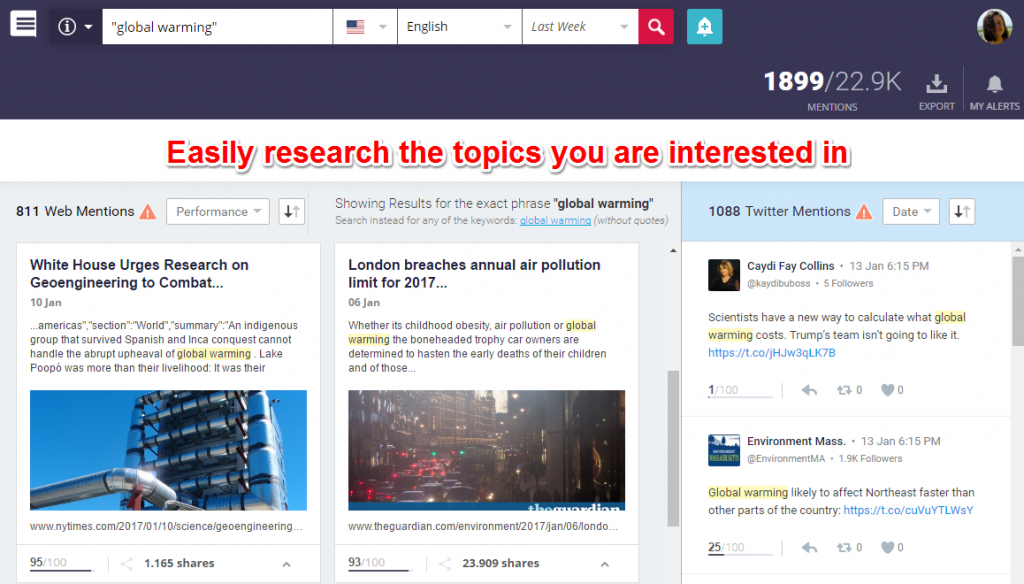
22. Write List Posts
List posts can be really useful – just look at this one. Joke aside, there is actual value to list posts. Sure, you don’t get to go into a lot of detail, but the richness and variety of ideas will compensate for the lack of depth. Readers are aware of the fact that lists tend to gloss over details and they’re OK with it, mostly because what they’re looking for is variety of ideas.
Quality usually beats quantity, unless it’s exactly quantity that you’re after.
23. Include the Important Numbers in the Headline
Lead with your most important data. Don’t try to attract users with cheap, vague clickbait tactics like the one below:
You won’t believe how many writing tips we have in this list!
A lot of editors seem to have forgotten that what people really need is information, not mystery. And people will read your article for what you promise them in the title – and leave satisfied after getting what they wanted. Moreover, sometimes the numbers are impressive in themselves.
Here are couple of examples of numbers that make you think and want to find out more:
- Wi-Fi and mobile-connected devices will generate 68% of all internet traffic by 2017.
- In 2015, 64% of all in-store sales, or sales to the tune of $2.2 trillion, were influenced by the internet.
- Only 44% of web traffic is from humans; a massive 56% of web traffic is from bots, impersonators, hacking tools, scrapers and spammers.
- A single second delay in your website loading time can result in a 7% loss in conversion, and 40% of web users will abandon a website if it takes longer than 3 seconds to load.

Source: hostingfacts.com
24. Use Short, Well Structured Paragraphs
Ever heard of the KISS rule for public speaking?
Keep It Short & Simple.
That’s exactly how you should think about your persuasive copy. We’ve already mentioned earlier in the list that you should think of your texts as an ongoing conversation. Most people talk in short bits during a conversation, to allow the other person to process what they’ve heard (and also leave plenty of opportunities for interventions). This formula grabs attention easily. Admittedly, your readers can’t jump in while reading your text to alter its course, but they still need to process what they read. They’ll appreciate a clear and simple structure, where everything seems to flow naturally, rather than verbose paragraphs whose main purpose seems to be to obfuscate them.
Remember: one paragraph, one idea.
If you’ve changed ideas, it means you need to change paragraphs as well (or, at the very least, sentences).
25. Write Your Copy in a Conversational Way
Try to make your text read like a real conversation (with actual people). Obviously, that’s not 100% possible; you’re not writing plays, after all. But you get our gist.
People have conversations in their heads anyways.
You read a text and find yourself muttering out loud “true, true…”, “wow, that’s crazy!” or sometimes even “that can’t be right, can it?!…” You can even try to interact with the reader when you’re sure your text will elicit a certain reaction. Just said something counter-intuitive or shocking?
You could try to start your next sentence with something like “I know what you’re thinking: ‘surely that can’t be right.’ But it is entirely accurate.” It might not always work and you will have to even resist doing this sometimes, but it’s worth keeping in mind that this is a possibility.
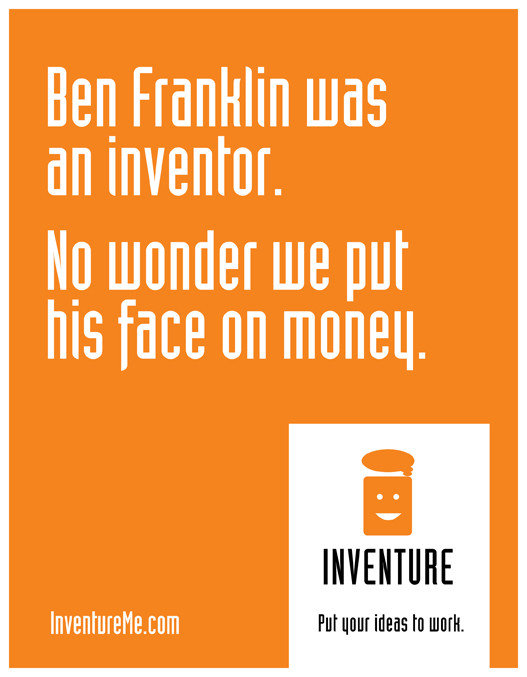
Source: printwand.com
26. Take Advantage of Power Words
Do you know anyone opposed to progress? What about anyone who rejoices at the sound of the word suffering?
Not all words are created equal and some words have more power than others.
It is usually because of a specific cultural background of that word, the way it has been used consistently by people to mean a certain thing; so much so, that a particular association is now the only one that comes to people’s minds. Richard Weaver, a 20th century rhetorician, introduced the concepts of “god terms” and “devil terms” to refer to words that have an almost universal positive, respectively negative, connotation. There is a thin line to balance here between being rhetorically savvy and being manipulative, but power words are definitely worth exploring if you want to create better texts.
In his incredible book “Predictably Irrational,” Dan Ariely dedicated a chapter to the power of words in the process of decision making. Long story short, to test the power of the word “free” concerning concrete value, Ariely asked a group of people to choose between a 1 cent Hershey Kiss or a 15 cent Lindt truffle. Most of the people opted for the second version. Nothing intriguing so far. Another random group of subjects were asked to make the same decision just this time both products were cheapened with 1 cent. The results? As you can see in the image below, the subjects seemingly flipped on their opinion of these two treats.
Do not underestimate the power of “free”.
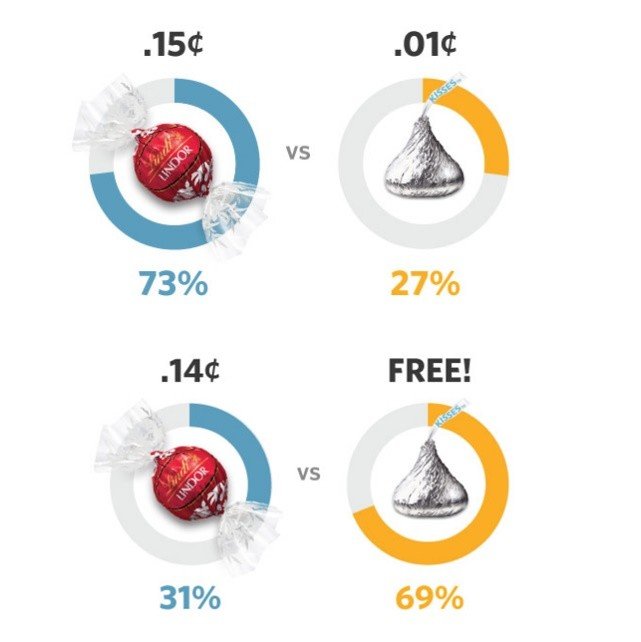
27. Make Efforts to Become a Better Writer
Writing is a skill, not a trait you’re born with.
Sure, some people have more talent than others, but just like with a lot of artistic skills, hard work, passion and determination can overcome a talent “deficit.” On the other hand, natural talent withers if it’s not exercised regularly. Read viciously what your favorite copywriters publish. Read books about writing. Go to classes about writing. Listen to podcasts and watch videos about writing. And most importantly?
Write every single day. Always with intent, always trying to get better at something.
Look into style and try to emulate various writing styles. Take what is useful from each of them. Look into creative writing and push yourself to write about things you never cared before. Not everything will stick – in fact, most likely won’t. But being better at writing is something that happens slowly and in bits and pieces. It’s also something worth pursuing.
28. Make Efficient Use of Social Media
We’ve touched on this before in our posts and it’s as relevant now as it was then: social proof can be a huge help, as long as you use it strategically. There are plenty of statistics out there about what works best: how many words to use in your posts, what time to post on each network, when to use tags and what to use them for. These statistics are a good starting point, but you’ll have to put in some work, too. They represent average findings of everyone online. You might discover different findings for your business or line of service, as long as you’re willing to put in some time for trial and error tests.
We’ve conducted a very in-depth study to figure out if social signals influence SEO and one of our findings was that a strong presence on social networks is correlated with better rankings, as you can see in the screenshot below.
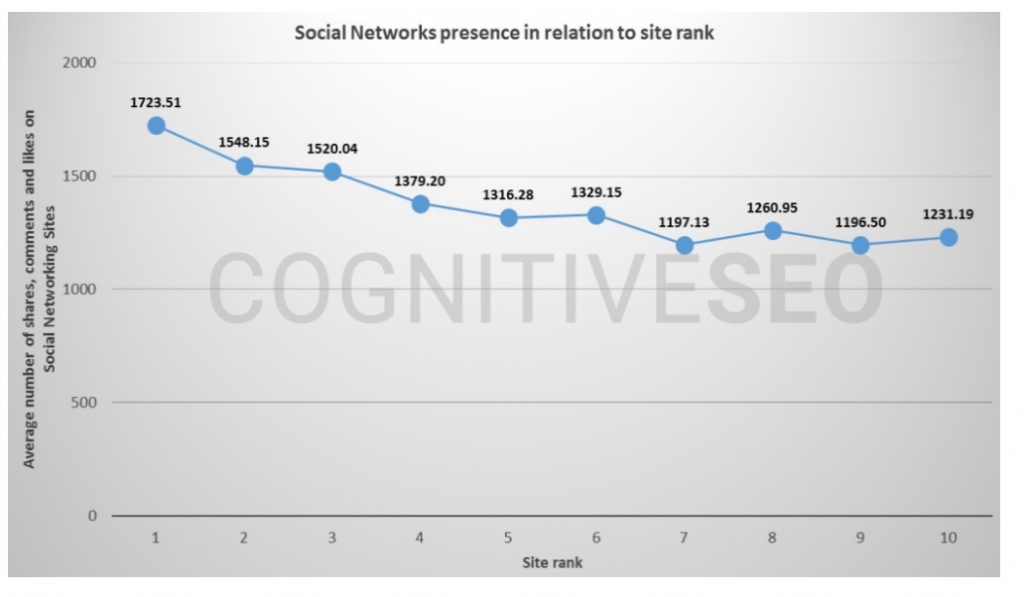
29. Remember that All of Your Content Matters
Write every time like that’s the most important thing to publish.
Don’t think of anything you write as a throwaway or filler.
You need to believe that what you write is important, otherwise there’s little chance the reader will think it.
30. Use Synonyms and Help Google to Help You
Synonyms have been managed automatically by Google for years now, yet what you may not know is their high influence not only on your copy but also on rankings. We all use Thesaurus now and then to “beautify” our content.
You might not know that you can use synonyms for rankings as well.
Let’s say that you are in the “laptops” niche and you write content on this matter. It wouldn’t be bad if you used not only the exact match laptops, but also synonyms or words from the same area with this one : computers, notebooks, etc. And this is because Google is becoming increasingly smart and it returns results not based on the exact matching word but by the intent of the user, using sometimes synonyms of the words or their lexical family.
Use synonyms smartly on your website in order to rank higher not just because you’re obsessed with ranks, but because your website might be relevant to people who search using similar but not quite exactly the same words. More on how to take advantage of this technique can be found on a previous in-depth research we’ve done on how to exploit the synonym technique to increase your traffic.
31. Stalk Forums for the Exact Words Your Readers Use
Most of the time we speak about things we think our readers want. But they may be interested in different things, or talk in different ways about those things. Think of a piece of software, for instance: how the developer might describe its functionalities (“Formatting text in XProduct”) is not how users might ask questions about it (“How do I make my text bold in XProduct?”). Therefore go ahead, check the forums and search for the exact word your readers use.
32. Write Your Own Description Tag
Copywriting doesn’t imply just blog writing and in-depth article research but also every piece of content written that is related to the business you are working for. Therefore, one of the things you make sure as a killer copywriter (and/or SEO professional) is that you write your own description tag for every important page on your site. Otherwise, Google will do that for you. And you might not want that.
Why is this useful for your copy?
Usually, when someone does a Google search they want answers really fast and very relevant.
This means that if they search for Copywriting Tips and Tricks they would expect to see at a glance exactly what they searched for. And if, along with the title, in the description tag you show them the quick wins they will have, you get more clicks.
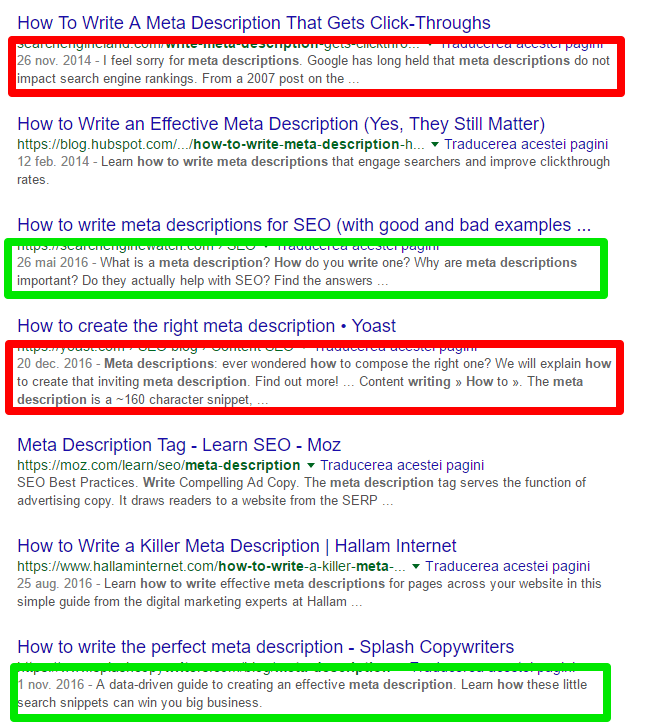
33. Focus on Long Tail Keywords
Long tail keywords are those three and four keyword phrases which are very, very specific to whatever you have to offer. Regardless of the fact that it might be easier for your content to rank higher when using long tail keywords, it is also a better way to connect with customers. We’ve written more on this subject in a previous post.
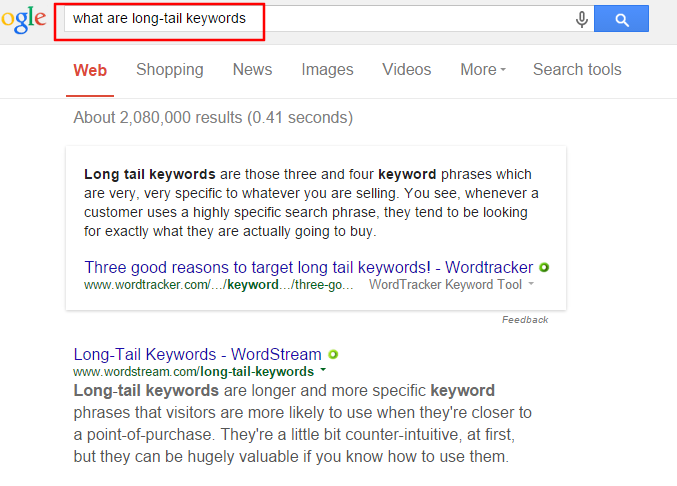
34. Write Up to the High, Positive Expectation
It does hurt to say, but the more you read meaningless content on the web, the more you expect the next link you click on to give you hands on content.
If you’re unlucky enough to be the fourth or fifth and the reader is already bent out of shape, you clearly wouldn’t like to be in the position of disappointing him. It’s harder to work for content than it was for linkbait and clickbait years ago, because this time there’s no shortcut to get people’s attention. You’ve got to be fair and you’ve got to deliver. Let’s call this Attention Web.
Only promise what you can deliver!
35. Be Crystal Clear and Give Quick Previews that Make Your Points of View Acceptable
We all have belief biases – this means that when facing a logical argument, we’re more likely to believe it if the conclusion seems more plausible instead of analyzing the supporting evidence. Bold points of view are lifesaving. They raise eyebrows and tickle curiosity, while sending the impression of reliability. Which is why people will read the first sentence of your post – unfortunately, after this they realize you’re about to contradict their prior beliefs and leave. Just like that.

36. Deliver Something Valuable in an Intuitive Way
Suppose that you’re lucky enough to write about the topic someone’s recently been interested in – this only means they’ll notice your work, at best. From here to actually reading your content there is a lot of work paved with intermediary steps.
Digging too deep into a topic often implies taking a lot of extra risk.
We only read in-depth content analyses; we do our homework properly, we’re never out of touch and we can tell you what’s trending from sleep. And yet, there’s nothing easier than losing the interest of your readers.
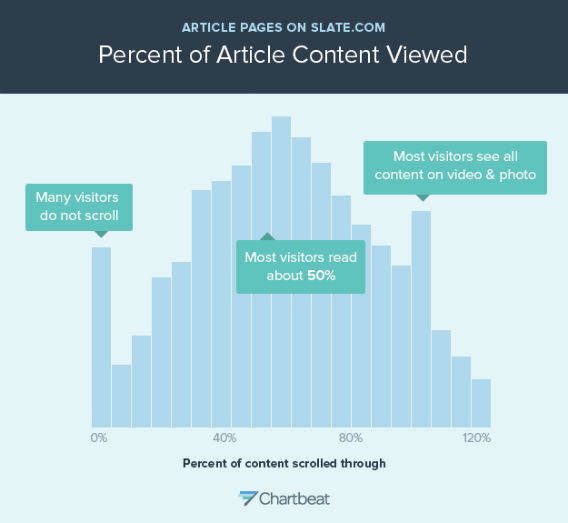
Source: slate.com
37. Go with the Status Quo Over Newly Presented Facts
Status quo bias is an emotional bias; a preference for the current state of affairs.
The current baseline (or status quo) is taken as a reference point, and any change from that baseline is perceived as a loss. The truth is that we care more about maintaining our Status Quo (state of facts) than we do about truth; and if you’re saying otherwise, chances are your brain is playing some tricks on you.
Therefore, if it’s not imperative to change, innovation for the sake of novelty is the number one enemy of reader loyalty.
38. Learn how to Measure the Success of Content Marketing
Content we share doesn’t always equal content we’ve engaged with. It’s a lot easier to share content based on its title than it is to actually engage with it. Yet, it’s highly important to know how to measure the success of a piece of content. Metrics for on-page behavior, for SEO, bounce rates, average time spent on page, the number and quality of the comments or the metrics for social media performance are elements you should always keep an eye on.
It is not just the people who convert are important, but the pages they convert from.
Here you can find how to constantly monitor and learn from these metrics

39. Learn where Your Readers Get Their News and Information from
No, you won’t need night vision goggles or an invisibility cloak to monitor your community.
What you do need is to pay attention to your surroundings. Working inside of a system often makes us lose what’s most important in succeeding—the holistic view of the industry.
40. Get Inspired by Your Community’s Interest
There’s no place more insightful than your own community—you’ll find plenty of ideas there if you just take the time to look at it. Being part of an industry often takes a lot of time, especially in domains that seem to be so competitive, in a never-ending effort to become better. However, sometimes we should just stop. And see what it is that’s missing—there’s always a glitch—something that you haven’t discovered yet. Start from there. I know it might sound like a task hard to achieve but tools such as Brand Mentions can really ease your job.
41. Thoroughly Document on Your Niche to Find Content Inspiration
Whether you are a content marketer who is interested in the content from a specific area or you are into more generic matters, first thing first, you need to check out what is going on in that niche and find some inspiration from those findings.
Correlating search trends with the most recent mentions on the web seems to be a great formula, regardless of the niche you are interested in.
42. Talk to the Sales and Support Team
Through all its efforts, a company/business/website is trying to find a way to best reach its audience. Some efforts are sort of an “indirect” contact with the public through online content but there are also some others who are in direct contact with the user. A discussion with the sales and support team might be a great opportunity for you to better understand your audience’s needs or challenges and adapt your marketing copy accordingly.
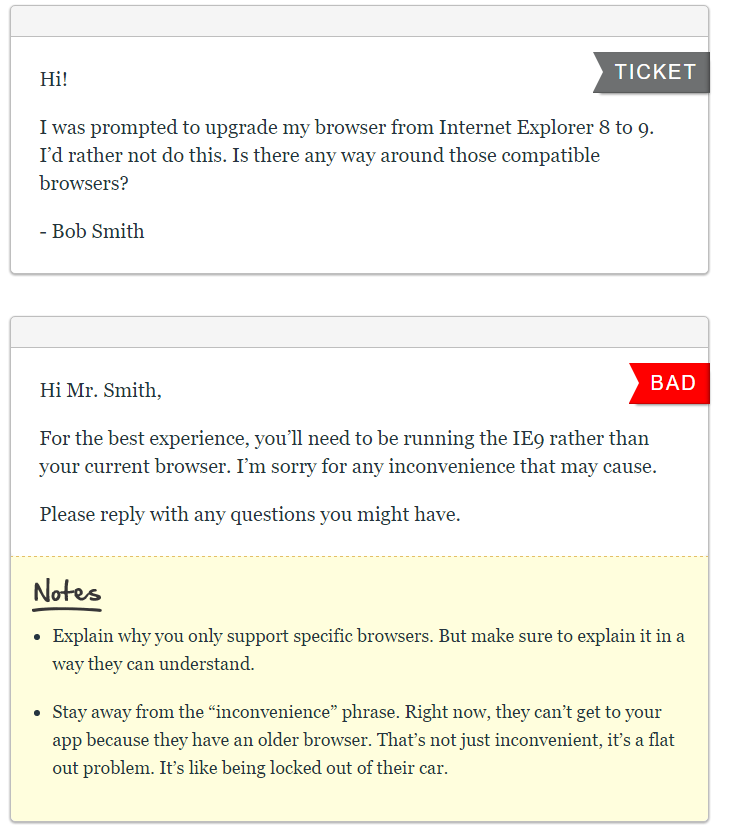
Source: helpscout.net
43. Create a Content Strategy Calendar
After collecting a bunch of great article ideas you need to gather them together in a way that will be efficient and effective for your website or blog. And creating a content calendar is a method to get the best results out of your ideas. Although “Content Strategy Calendar” might sound a bit pretentious and you might get discouraged or think it is a very complicated task, the truth is that even a simple Google Doc Spreadsheet can help you out. What you need to keep in mind for each article you are going to write is that you have to take in consideration items such as:
What type of content is it? Where do you intend to publish it? What is the article’s audience? How and where are you going to promote it? How are you going to scale the result?

Source: meistertask.com
44. Remember that Visual Information Makes Readers More Thorough
The more we try to put information in pretty wrapping, the harder it will be to present it without visual support. It is just one among other smart copywriting formulas. Every attempt to make web content more interesting contributed to this borderline surrealistic change to the way we perceive content online. It seems that our brain really loves graphics more than you’d imagine:
- visual information has increased by 9,000% since 2007
- color visuals increase willingness to read by 80%
- we receive 5 times more information than we did in 1986
- we don’t read more than 28% of the words when visiting an online page

Source: contently.com
45. Harmonize Your Online Content with the Offline One
The online and the offline often find themselves in competition and it shouldn’t be like that. In reality, although the two environments should not be compared, it’s impossible not to weigh one against the other. Yet, regardless of the advantages and disadvantages each one brings, one thing should be clear: they need to be coherent altogether and they both need to tell the same stories, even if with different lines.
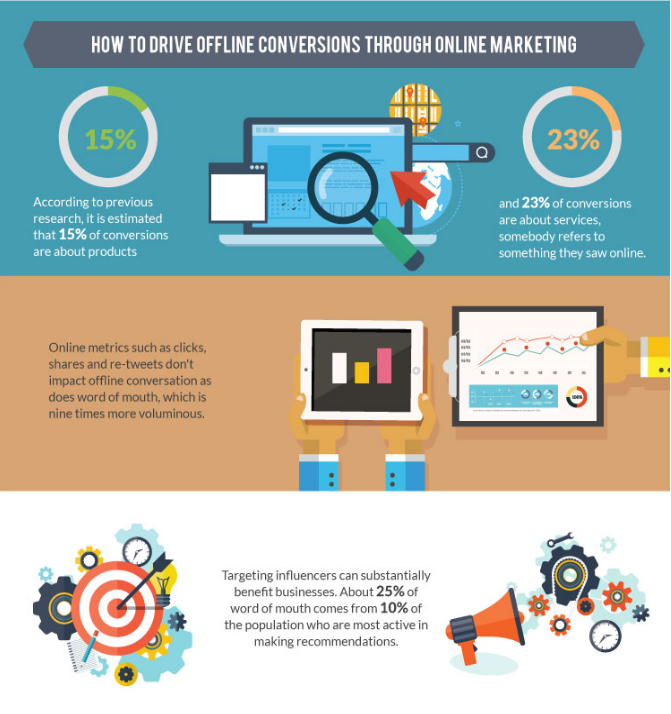
Source: blog.hubspot.com
46. Always Keep the Attention Span Matter in Mind
Because technology today can store so much information, we can’t keep track of it anymore.
Writers in the 17th century claimed they had read everything written in their language throughout history.
Today, this statistic is unachievable even to those of us who try to keep themselves up-to-date in their fields of expertise.
Nowadays, our attention span is 8 seconds and falling. Approximately 66% of our attention is spent below the fold , especially when it comes to content, and we’re impatient to get over the (often) boring introductions directly to the heart of what interests us.

47. Learn from Your Most and Least Shared Content
Figuring out what works for your niche is crucial. Looking at the content that performs best in your niche might be intuitive. Even though you might think it’s redundant to look at the bottom of the list, there are insights to be learned from your weakest performing content, too.
You need to see which pages have attracted the least amount of visitors and what type of content is not of interest to your viewers.
Creating uninteresting content isn’t useful for anyone. It is not useful for your target audience, and it’s clearly not productive for your business.

48. No Shares, No Likes, No Comments = No Traffic
Content creation and shareability are parts of the content strategy concept and you can’t separate one from each other.
It would be a true shame to create great and useful content that does not receive any love from the community.
Just like us, you’ve probably seen a lot of bloggers create great articles that impressed you. But, they received little to no engagement. While creating content has its obvious benefits, maximizing shareability assures the success of your content strategy.

49. Originality Is a Must
You don’t have to re-invent the wheel on a daily basis.
You may also create content that has been done before as long as you augment it with a new spin.
As long as it’s a fresh and interesting approach to an idea, go ahead with it.
Remember that most of the times originality is nothing but judicious imitation.
The most original writers borrowed one from another.
50. Existing Content Needs Love, Too
When creating content, we tend to never look back and always think of the next idea.
You should always take your existing content and see what you can gain from it.
Maybe create a sequel, maybe an update, maybe there are some ideas in that piece of content that weren’t fully discussed. And even if it’s evergreen content we are talking about, remember that this kind of content is relevant for people now and it’s going to be relevant for them after a year, too. We’ve written a blog post on exactly this matter, where we put together some of the best ways to repurpose existing content.
51. Timing Is Everything
As the famous lines say, there is a time for everything : a time to be born and a time to die, a time to plant and a time to uproot. And this applies in copywriting as well.
It’s obvious that writing the right article at the right moment is crucial.
There are times when important changes occur in the niche you are addressing and clearly you need to react on the spot and have a piece of copy ready for the moment. Yet, there are times when you need to know what new trick you need to unveil in order to capture your audience’s numb interest. Also, an important part of this matter is maximizing the shareability of your copy. Therefore you need to figure out when you’re going to get the most out of your content, at which moment of the day, the week or month you should share the content to receive the most traffic.
52. Spot Your Competitor’s Most Engaging Content
Content marketing – done correctly – can be a very effective way to attract and retain clients, but the problem is more and more companies produce more and more content. It’s highly important to understand how to produce content that will engage your target audience, but is also vital to know what your competitors’ most engaging content is. To figure this out you don’t have to spend ages collecting and analyzing all that content, you can do things way easier and efficiently if you use the proper tools.
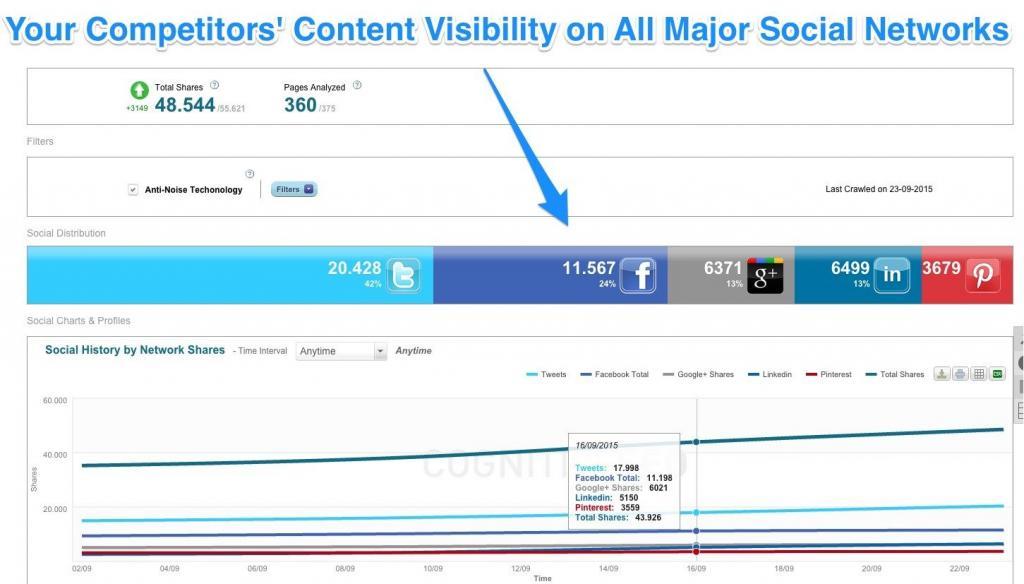
53. Make Use of Content Curation to Boost Your Influence
Everyone has wrapped their brains around the idea of content creation and knows they should create amazing content to engage with their target audience. And that’s how content curation, the less known brother of content creation, gets left out in the cold.
A professional content curator picks and polishes the most amazing content and serves it up to the community and also gives credits to the owner.
It is definitely a power that can be harnessed, and remember that content curation is not content marketing.
54. Analyze, Analyze, Analyze
This applies before actually writing the piece of content but also after the copy has been unleashed to the world. Learn to monitor the places your content is published and analyze the traffic. Visitors who come and go are an invaluable resource of information regarding the content’s usage pattern. Watch out for data like keywords, bounce rate, and click patterns to learn more about their interests. Also, ask about the blogs and social networks where they spend their time online. You may find discussions that may shed a light on their needs and interests.
On the internet, in an age where everything is monitored, you are bound to find data about anything.
55. Creativity Is Key!
There is this common perception that creativity is a taboo subject or that is a “feature” that only the chosen ones are gifted with. As Steve Jobs once highlighted, most of the times creativity is just connecting things. When you ask creative people how they did something, they feel a little guilty because they didn’t really do it, they just saw something. It seemed obvious to them after a while. That’s because they were able to connect experiences they’ve had and synthesize new things.
However, copywriting and creativity go hand in hand. This is why while sticking to your business plan, you enter a comfort zone, which is the worst enemy for creativity. When you empty your mind of all past concepts, you’re going to fill it with creativity. You have to liberate yourself from the limitations of what you already know.

56. Fill Information Gaps – Become a Reference
An information gap is a construct, a theory or an idea that the audience believes should be informed on, but doesn’t seem to be explained quite extensively. Rather, the reader feels like the information comes in bits and pieces, like an underlying premise of any discussion that derives from the matter. Here is where your content jumps in. Yet, for the strategy to work, the information will have to be relevant and systematized, while offering an in-depth perspective on the topic. Become a reference and the results will follow.
Once you’ve proven yourself as a trusty, authentic go-to blog, your leads and email subscription rates can dramatically increase.

57. Targeting Longtail Keywords to Engage Your Audience
Micro-targeting paints a big picture. The more you invest in targeting the right long tail keywords, the bigger a shot you have at accessing a key audience interested in a specific topic. Choosing topics for content writing should always be the result of a targeting process. Once you do this, the chances to grow a solid audience with an increase intent in your business are sizable.
58. Repurpose Your Content
Running a blog with constant valuable and high quality content might sometimes be difficult as it is a resource-consuming process. Therefore, why not getting the best out of the content that you’ve already worked on? Repurpose the content you already have. Not only will you save resources, but you’ll also extend the reach of your blog and maybe find new ways to reach your audience. Here are some great ideas of how to repurpose your content:

59. Make Use of Content Convergence
Before asking yourself how this might help you, allow me to explain what this is about.
It refers to merging one boring, dull topic with a more exciting topic, whilst giving it a theme which gets attention.
If you are to write copy for, let’s say, plumbing supplies or for air conditioners, you might find it difficult sometimes to remain consistent, creative, original, etc. Here is where convergence might help you. Try giving the content a snappy title, make it more about the reader than about the website, As we’ve detailed in a previous blog post, by introducing a new element to the narrative you’ve made a boring item more interesting and opened up your website to getting links from places your competition would find hard to replicate.

60. Make It Interesting and Diverse, not Just Relevant
Undoubtedly, relevancy is a must.
While being relevant, a diverse mix of content can be used in order to keep things interesting for your readers.
This might require videos, case studies, articles, e-Newsletters, webinars, blog posts, data visualization posts, competitions or photographs. This might require some market and consumer research skills in order to understand consumer expectations with regards to the kind of content they want to read. Yet, it’s totally worth it.
61. Don’t Forget about the Content Monarchy
Whether you agree or not, “Content is king” is one of the widest spread Internet memes. You will see the phrase referenced all over the place. And we tend to think that mostly Google is “the guilty” one for this matter. For a while now, Google has been promoting the importance of content and it has even shaped an algorithm on exactly this matter, ready to penalize sites that do not respect content quality guidelines.
The thing you need to remember is that you need to write good, relevant and qualitative content for the sake of your readers but also to avoid any Google Penalties.
62. Quality Is not a One Time Act, It Is a HABIT
As the saying goes, we are what we repeatedly do.
Excellence is not an act, but a habit.
You’ve written a blog post and you have thousands of shares and appreciations? That’s a great. Yet, that one time performance won’t keep you on the top for long. On the contrary, once you’ve set the bar high, you need to keep up with it to have killer content.
This is similar to the one hit wonder music bands.
We all remember the musical hit, we sing it at birthdays parties for a period of time, yet we probably won’t buy the album just for that tune.
Same thing may happen to your content. If you want your readers to look at your blog/brand/name with respect and put you in the trustworthy content category, make a habit out of delivering quality.
63. The Title of Your Content Will Influence Your Rankings
Every site owner’s dream (and goal) is to rank as high as possible for their target audience. Every search engine’s dream (and goal) is to make sure that the most relevant websites rank the highest. Therefore, it’s a vicious cycle.
Yet, keywords used in the titles of your copy have a high ranking importance. We’ve conducted a study where it seems that keyword appearance in the title makes a clear difference between ranking 1st or 2nd.
When creating the title of your content you should really think things through, as the title must not be only relevant and attractive but also SERP friendly.
64. Ask Rhetorical Questions to Engage Readers
Do you ever use rhetorical questions in your writing? Like this one, for instance?
Rhetorical questions make your arguments more persuasive.
Also, your audience will become engaged. And if your arguments are strong and valid, readers will be more likely persuaded by them.
65. Choose the Fonts and Colors Carefully
Around here we put a lot of emphasis on content and go on and on about how it comes first. But that doesn’t mean we’re blind to aesthetic choices. If you have good, original, insightful, even life-changing content, but choose to display it in green Comic Sans over a pink background, you can count us out. And a few other readers, too.
Choice of font and color scheme can greatly influence the success of a piece by being a factor for accessibility.
Certain fonts make for easier reading when it comes to big blocks of text, while certain color schemes make it easier on the eye to spend long amounts of time on landing pages. Font and color also go a long way in terms of credibility: some combinations simply look slick and professional, while others give an “untrustworthy” vibe, despite potentially good writing.
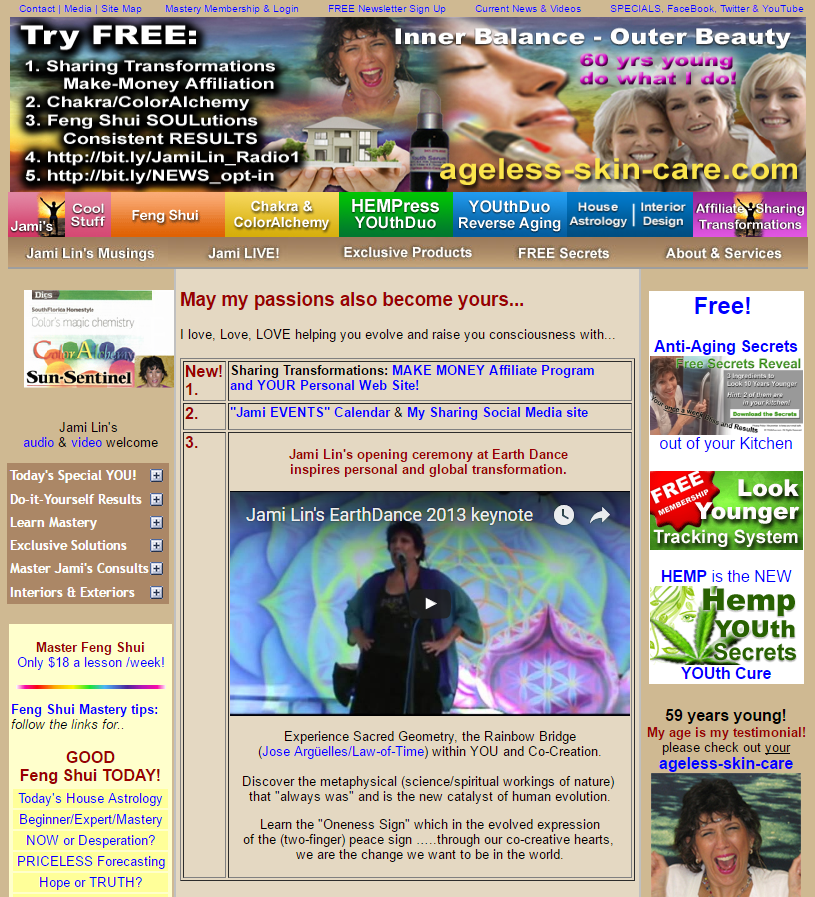
66. Use Positive Frames to Describe Information
Negative frames describe something that isn’t taking place. Positive frames, on the other hand, describe something tangible, something that is happening. Studies show that we need more mental resources to process negative frames as they reduce comprehension and degrade the impact of your message. Therefore, positive frames should be the one you should look for.
NEGATIVE: Don’t be late.
POSITIVE: Arrive on time.NEGATIVE: Don’t drink excessively.
POSITIVE: Drink responsibly.

 Site Explorer
Site Explorer Keyword tool
Keyword tool Google Algorithm Changes
Google Algorithm Changes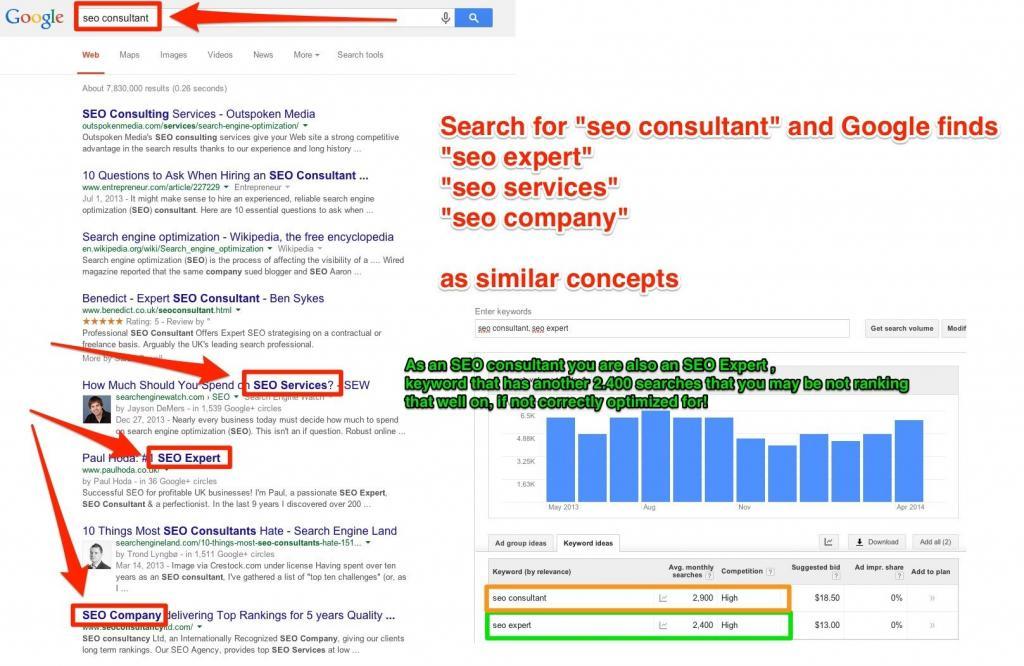



very nice article. But it is too long to read in one go. you should ad a PDF version or divide it in part 1 and 2.
But thanks for putting so much work in creating this wonderfull informational piece
Hi, there!
Glad you liked the article. It’s long indeed but thanks for the suggestions; we are currently thinking of the solution proposed by you 😉
that took me a long time to study 🙂 but this is a good peace of content and i deeply appreciate your effort xD, keep it up.
Glad you found it useful, Alex. You know the saying: Writing a story, regardless of length, begins always with a single word 😉
Long article, indeed; nevertheless, extremely useful. I’m actually very glad that this article had this much information all on one page, it makes it easier to study rather than bouncing off numerous pages at once.
Thank you for the tips, they’re appreciated.
Great article, Cornelia Cozmiuc. Thanks for sharing with us